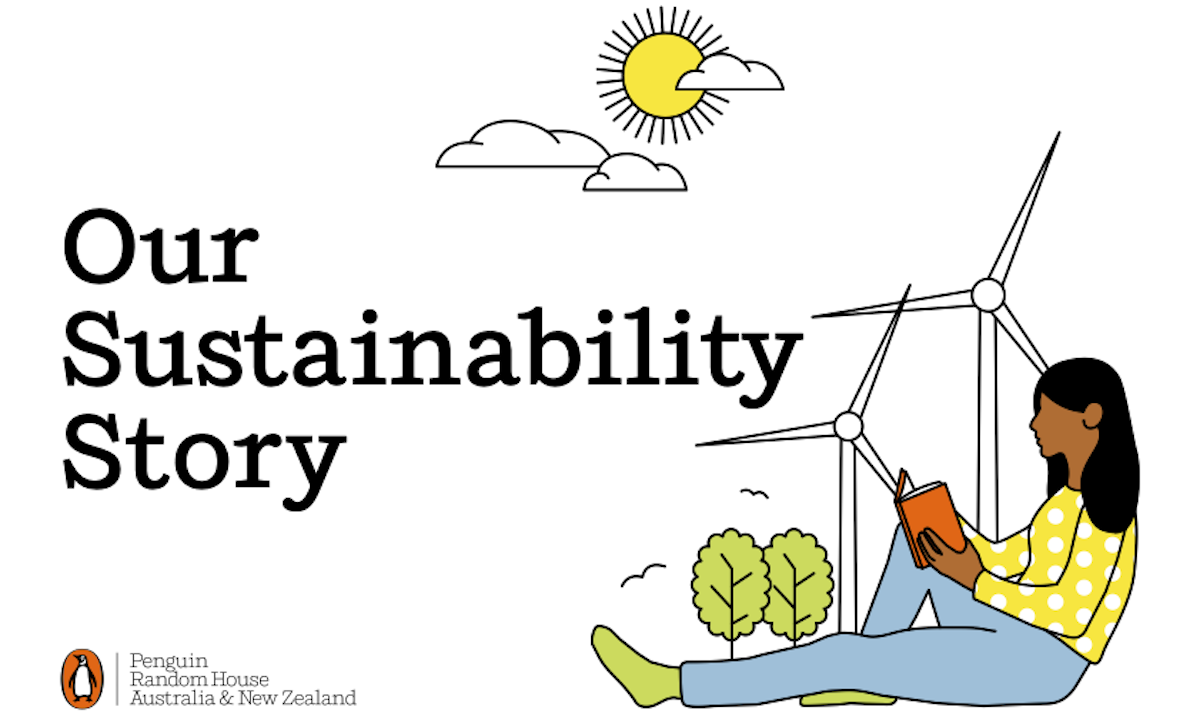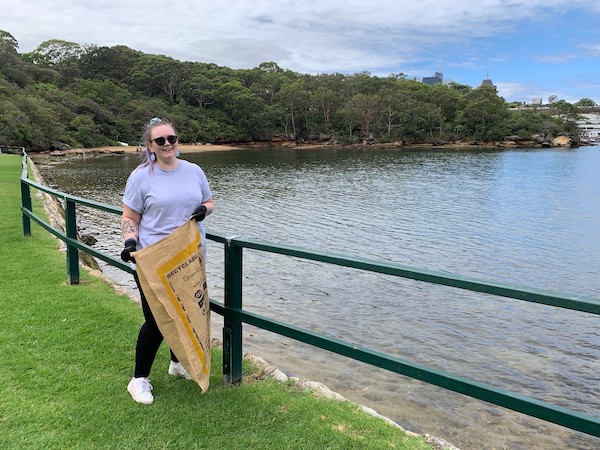
16/06/2023
One year into her role as Social Impact Officer at Penguin Random House ANZ, Jordan Artery shares some of the publisher’s recent sustainability activities and achievements, and offers tips for publishers who are just starting to reduce their carbon footprint.
What attracted you to the role of Social Impact Officer at PRH? Do you have a background in publishing or sustainability?
Social impact and sustainability issues have been close to my heart ever since I was young – I remember taking the Millennium Drought really seriously as a kid and using those little water timers to make sure I didn’t have a shower longer than two minutes. Fast forward many years and I completed my bachelor’s degree in climate science which really highlighted the urgency of the climate crisis, and as a young, fresh, graduate all I wanted to do was make a difference.
Unfortunately, that was over seven years ago, and life had other plans. I still never lost that hope to change the world and in 2022 I started my master’s degree in sustainable development, which led me to PRH. It was my first office-based role, and while I did small-scale sustainability work in my other jobs (which ironically, were fast-fashion stores – notoriously unsustainable), this was my first chance to make a change. One hundred percent, my background is in sustainability!
The first few months at PRH were a lot of learning about the publishing industry. Still to this day I learn new things about its ins and outs.
What does an average week look like for you?
The nature of the work means that each week is different – it just depends what we’re working on at the time. An ‘average’ week may include some of our regular sustainability meetings, both with our distributor UBD, and PRH staff, as well as our Green Team or CSR (Corporate Social Responsibility) meetings.
We have a Sustainability Steering Committee and are always working on planning and implementing strategies for reducing our emissions. Our emissions reporting allows us to target areas for reduction, so we have a detailed plan of activities to work on for the year.
I regularly catch up on any environmental news from around the world to make sure I’m aware of anything new, considering this space is constantly evolving. I am always on the lookout to educate myself, and will often attend webinars or events based on sustainability. Most recently I attended a Greenwashing seminar and another on Soft Plastics.
I spend some time planning events for the Green Team and any upcoming CSR-related days, as staff engagement is really important! These might include seeking out external organisations to collaborate with, or writing up educational pieces for our staff. I might also help our sales team with sustainability questions from our customers, and help our publishers and production teams with advice when choosing sustainable alternatives for book printing.
 You’ve been in the role for one year. What are some of your highlights or biggest achievements? And what have been the biggest challenges?
You’ve been in the role for one year. What are some of your highlights or biggest achievements? And what have been the biggest challenges?
We’ve done some incredible things in 12 months! A key thing would have to be launching our webpage and Sustainability report, which we pulled together in my first two months at PRH!
We’ve kept the page updated with articles and progress and soon we’ll be adding a second report that looks at our 2022 emissions – spoiler alert, we have continued to reduce our emissions since 2018, very exciting stuff!
 Jordan pictured out and about at Berry Island Reserve for Clean Up Australia Day – 'I managed to find a range of litter including a chair and lots of small pieces of plastic that looked like confetti. Some of the other PRH staff noted there was a lot less rubbish than previous years, which is promising!'
Jordan pictured out and about at Berry Island Reserve for Clean Up Australia Day – 'I managed to find a range of litter including a chair and lots of small pieces of plastic that looked like confetti. Some of the other PRH staff noted there was a lot less rubbish than previous years, which is promising!'Another massive highlight would have to be winning the Business NSW ‘Excellence in Sustainability’ award for the Sydney Metro area. Also achieving two of the Australian Packaging Covenant Organisation (APCO) targets two years early has been exciting. I’d also have to mention all the fun Green Team activities I’ve organised or participated in – National Tree Day (planting trees with a broken foot isn’t easy), Clean Up Australia Day and World Bee Day would have to be personal favourites.
We haven’t come up against many challenges so far, everyone at PRH is so committed to our goals and excited to be a part of the solution. It can be difficult to influence parts of the supply chain that are out of our control, but in the main everyone is up for working towards a better future.
What are your plans for your second year?
Continuing the sustainability journey! We have a plan to be carbon neutral by 2030 and there’s always areas that can be improved. I’ll look more to engaging with suppliers and having conversations about using more sustainable alternatives.
We are committed to reporting on our footprint annually and I will be crunching the numbers to ensure our report progress is shared internally and externally. It would be great to look back at this time next year and continue to see our emissions drop as the supply chain returns to post-pandemic ‘normalcy’. We will also be working towards the final APCO National Packaging Target to make sure we get there before 2025.
For publishers who are just starting to reduce their carbon footprint, where do you recommend they begin?
It has to start with detailing and understanding your footprint. Knowing where you are starting from helps plan how you get to where you need to be. Highlighting where your biggest emissions are coming from, of course, will influence where you need to focus.
In parallel with the big business strategies it is also important to engage all staff. Make sure your offices have thorough recycling systems, look to getting an organics waste bin for food scraps.
Don’t underestimate the power of staff education and repetition – the more you talk about it, the more people will understand and become accustomed to changes (even if they feel like they’ve heard you say ‘you can recycle the lid from your takeaway coffee cup!’ a million times).
Get confident in your own practices and then look to question and collaborate with your suppliers and customers. Most of the world wants to change for the better, someone just has to be the first person to start the conversation!
For more information on environmental best practice for publishers, visit the APA’s Greener Publishing Guide.